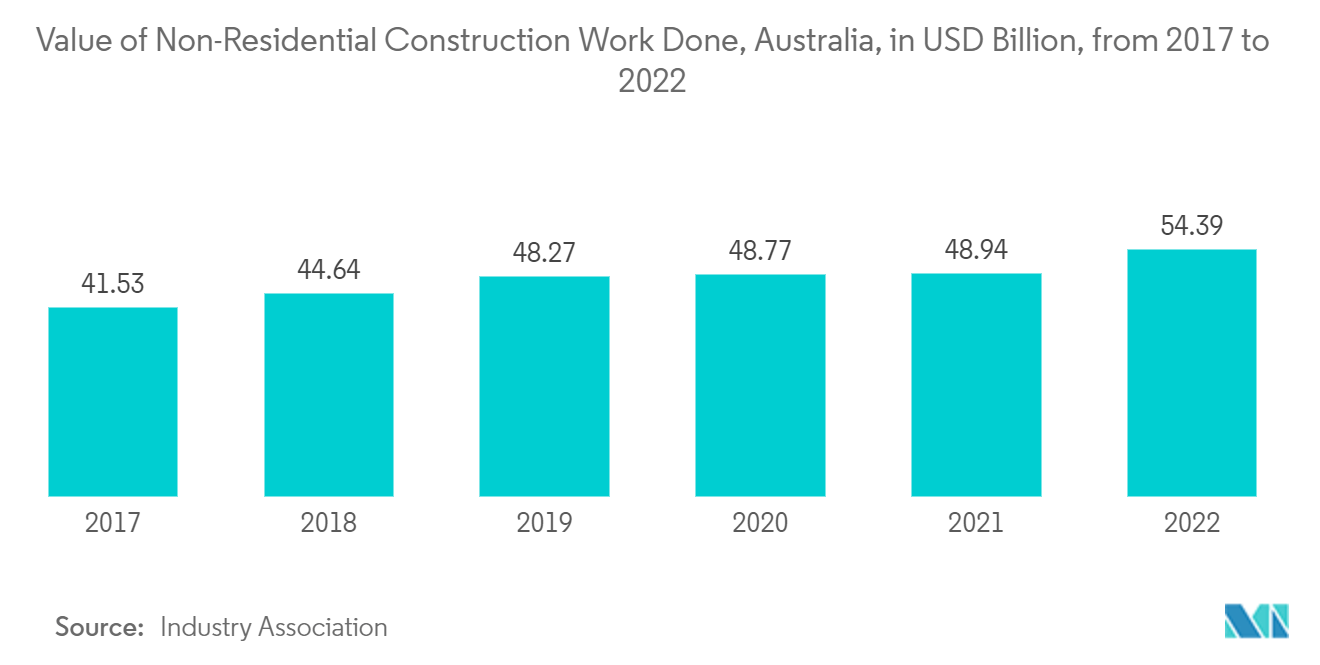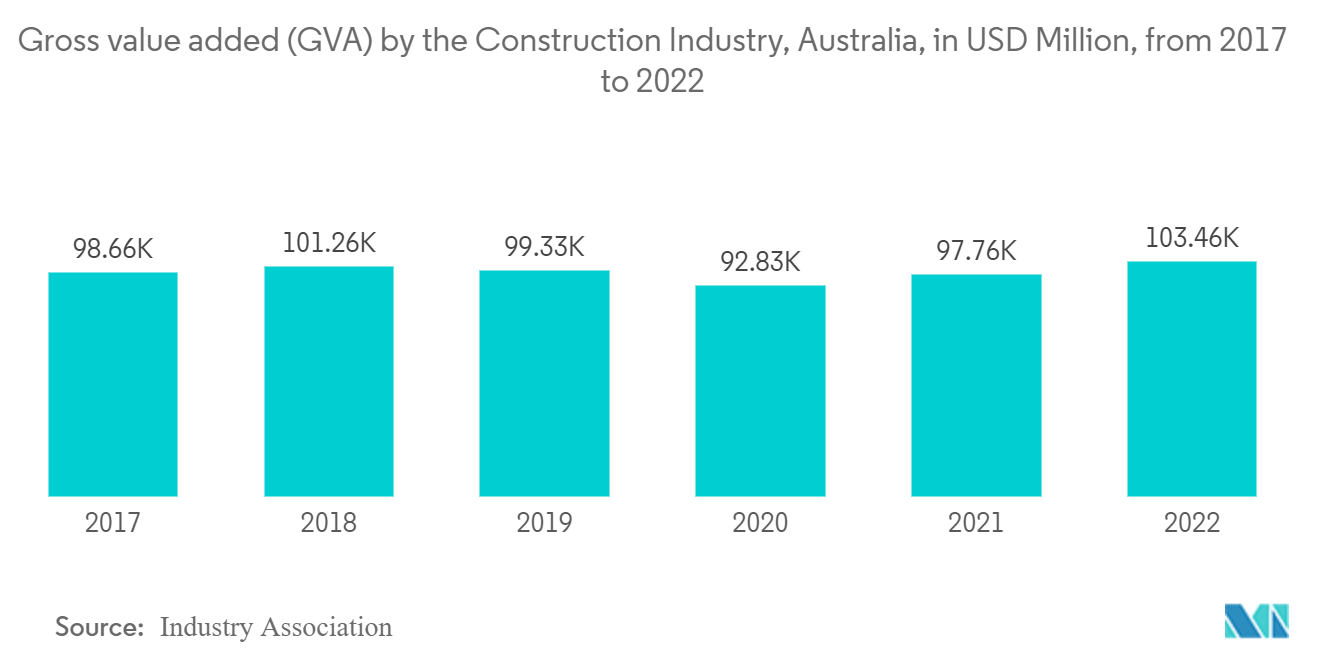Market Trends of Australia Construction Industry
Increase in Non-Residential and Infrastructure Construction
Commercial building has been one of the strong contributing factors to the construction sector of Australia over the last couple of years and has recently reached new heights in terms of volume. In contrast to the residential building market, the value of construction in the non-residential segment has continued to grow. The investments in the non-residential sectors were focused on schools, hospitals, offices, warehouses, and hotels.
Since the Reserve Bank of Australia has promised to keep interest rates low for at least the next three years, it is estimated that construction costs would also remain low in 2023. According to industry experts and studies, the boom in non-residential construction in Australia has come to an end and will exhibit a negative growth rate for at least the next few years.
Australia has many country-owned EPC (engineering, procurement, construction) groups, which are well-established in the mining-related engineering construction sector. Major UK and US EPC companies that have long had a presence in the market include Bechtel, Fluor, Balfour & Beatty, and Laing O'Rourke. Commercial construction has been a star performer over the last couple of years; however, such above-average growth is expected to fall back to normal levels in the forecast period. Office buildings, education, and accommodation will contract significantly, and transportation, health, and retail will have more favorable projections. With government-led projects in the energy sector and transportation ramping up, the construction industry is optimistic about seeing a growth rate during the forecast period.

Increasing Prefabricated Housing In Australia Driving The Construction Sector
Prefabricated housing is mainly driven by the demand for low to mid-rise residential buildings, project homes, and public housing. Increasing awareness about prefabricated building benefits, such as reduced material waste and less disruption to the surrounding environment, is driving market growth. Revenue in the prefabricated building industry is expected to grow as the rising demand from the government and education sectors has supported the industry during the COVID-19 pandemic. Furthermore, the Australian construction industry has faced severe challenges over the past two decades.
High-quality, lightweight, prefabricated modular systems are expected to contribute to housing stock with excellent amenities for occupants at a substantially lower cost when compared with traditional housing. With Australia's population growth expected to see a 60% increase to 37.6 million people by 2050, the industry needs to look to more cost-effective and well-designed inner-city developments at higher densities. Prefabricated housing is a next-generation housing construction industry, a game-changer in the cost of housing, competitiveness, efficiency, and productivity.
Prefabricated building systems and construction hold a high potential to improve the efficiency and performance of the Australian construction industry in a more sustainable sense. With the market just opening up in the building industry, generating trust and investments in the technology, the market is open to ample opportunities and can witness strong growth in the coming years.


